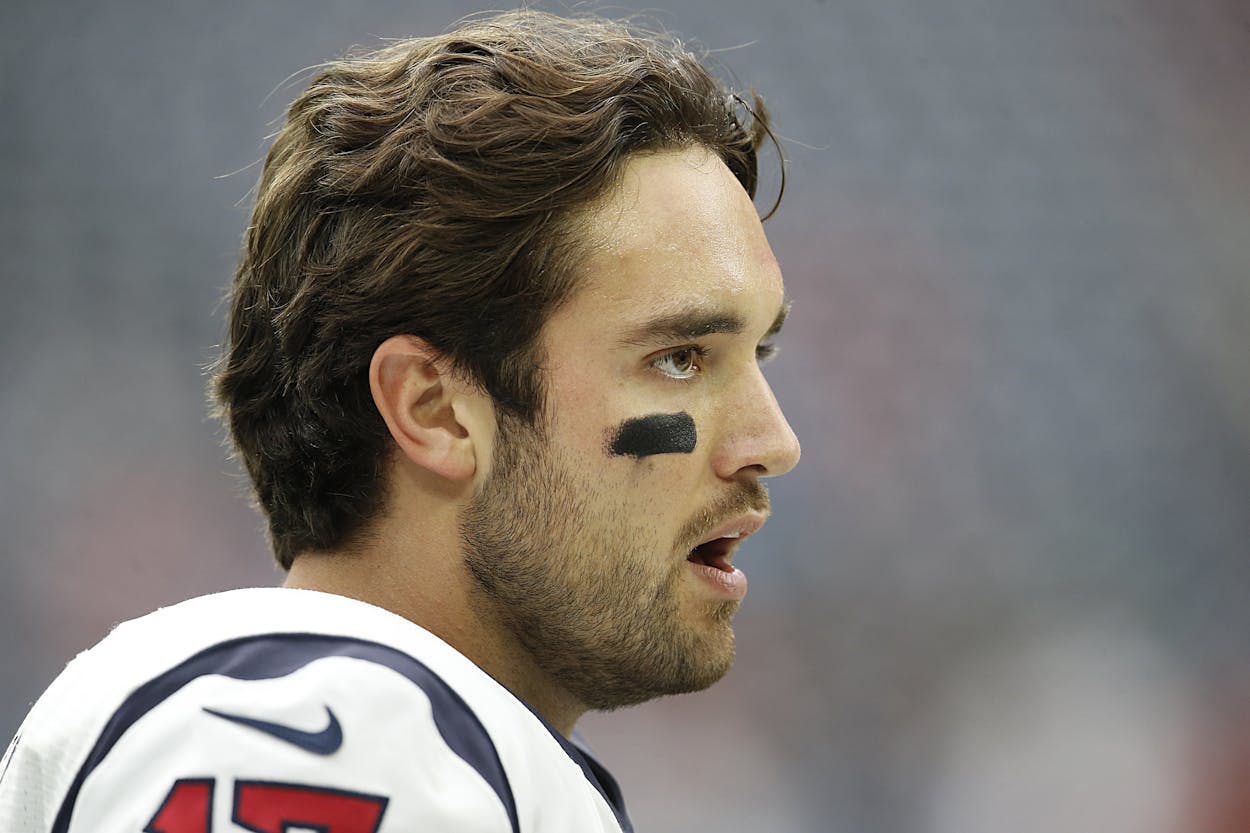Back in 2008, the Calgary Vipers independent minor league baseball team traded pitcher John Odom to the Laredo Broncos for ten bats. These were good bats, mind you—solid maple bats with a retail price tag of $65.50 each—but the trade nonetheless made headlines as one of the weirder things to happen in professional (even semi-pro) sports history.
But at least the Vipers, in dumping a player they didn’t want, got bats.
The Texans didn’t get a single piece of equipment in exchange for beleaguered quarterback Brock Osweiler. In fact, they had to actually give away their second-round draft pick in a trade to the Cleveland Browns. (In exchange for their incumbent starting quarterback and the fifty-seventh overall pick in the draft, the Texans did manage to convince the Browns to swap compensatory picks with them.)
Osweiler’s exit from the Texans is ignoble at best. The Cleveland Browns—a team that’s had eighteen different starting quarterbacks in the past ten years—had to be persuaded to take the prize of the Texans’ 2016 free agent class off of the team’s hands by being plied with a high draft pick. According to reports, the Browns are considering simply releasing Osweiler and absorbing the salary cap hit rather than keeping him on the team’s roster for 2017 or beyond.
That’s a hell of a turnover for a player who less than a year ago was the subject of a bidding war between the Broncos and the Texans (and if there’s one thing Brock Osweiler knows, it’s the meaning of “turnover”). His time in Houston was inauspicious, to put it gently—fans attempted a fundraiser to buy out his $72 million contract—and his lone playoff win for the team carries the asterisk that he was up against a rookie quarterback making his first ever career start on the road.
All of which leaves two questions: One, who’s gonna play quarterback for the Texans? And two, what’s gonna happen to Brock now?
The answer to question number one just got a lot more likely to be “Tony Romo” than it was even 24 hours ago. The biggest obstacles to Romo joining the Texans were Osweiler’s $16 million cap impact. That’s no longer a factor, which leaves a pretty clear lane for Romo to make his way down I-45, if that’s what he chooses.
Thanks for all the support everyone. pic.twitter.com/RlRS3KAqwb
— Tony Romo (@tonyromo) March 9, 2017
The options for Houston outside of Romo aren’t great. The twenty-fifth pick in the NFL draft isn’t an ideal spot to find a starting quarterback, and the rest of the free agent class—headlined, we suppose, by Jay Cutler—leaves a lot to be desired. The team is also thin on draft bait without that second-rounder, which means that they need Romo pretty badly. Romo, of course, carries his own risks, but things get a lot scarier the further you look past him.
Osweiler’s future, meanwhile, is even more grim. He might end up starting for the Cleveland Browns at some point this season, simply because almost anybody could end up starting for the Browns for a game or two. (It could be you! Or your mom!) If the Browns aren’t actually interested in Osweiler and were simply after that sweet second-rounder, then, good luck, Brock. He’ll be a street free agent, competing with the Geno Smiths and Johnny Manziels of the world for a job as a backup somewhere.
In all, this is a fairly stunning trade—but it’s also a rare example of a team making the right decision. Being so invested in Osweiler that you have to pay a premium (on top of the sunk money in his 2016 salary) had to hurt—and while the team will miss that second round pick next year (DeMeco Ryans, Connor Barwin, and Brooks Reed were all second-rounders), the break is otherwise pretty clean. That doesn’t happen often in the NFL—coaches and GMs who fell so in love with a player that they gave him a $72 million contract off of an extremely limited body of work feel the need to justify that decision somehow. Instead, the Texans made the right move for their franchise’s future, even if it sure does leave them even more uncertain about their present.








